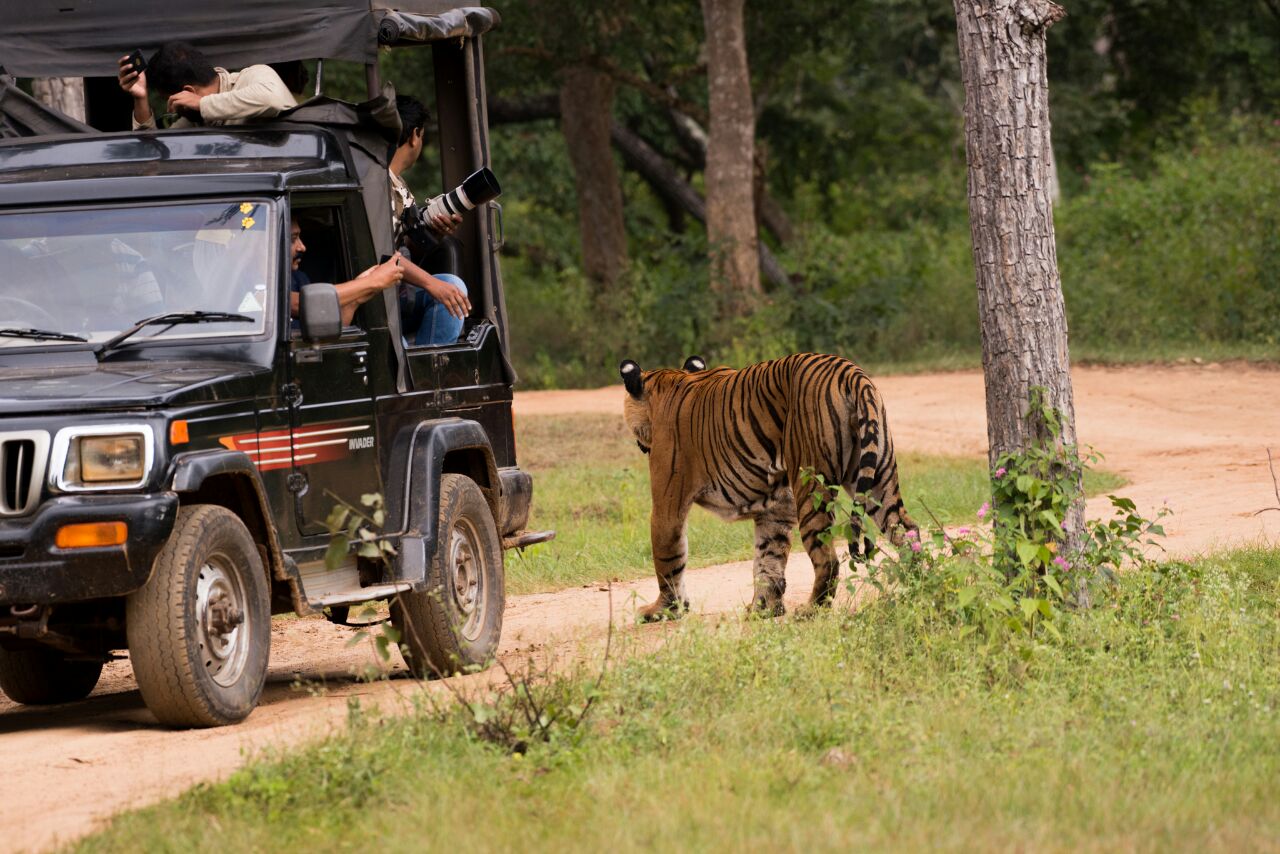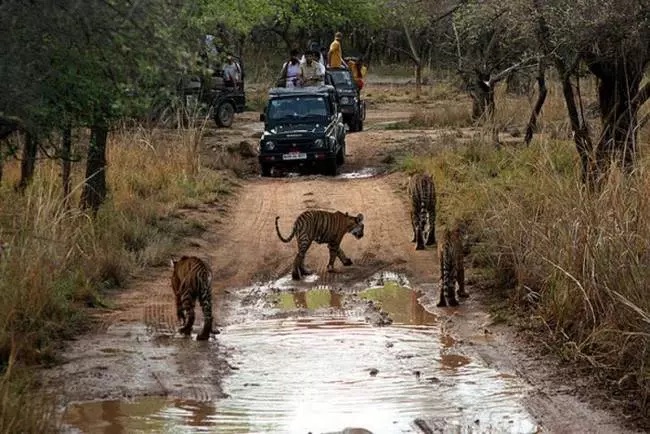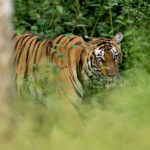Indian Wildlife Safari Experience – It’s the “60-30-10” rule that works here

This article about Indian Wildlife Safari Experience. It’s “60-30-10” rule which defines your chances of sighting specifically when it comes to the sighting of elusive cats like Tigers & Leopards. This blog explains the “60-30-10” rule in detail.

How does Indian Jungle Safari Works for you as a casual wildlife lover?
You as a customer would have approached one of the travel agents that you know or found on google or your friend/relative referred, or an aggregator of travel agents. Then you expressed your interest to do a safari in an Indian Jungles depending upon where you are going – maybe for a conference, maybe for a meeting, maybe for an Indian office visit or the branch office or maybe for some other reason (yoga, Palace, Tajmahal, medical or nature etc.) or maybe specifically for a wildlife visit.
They usually will connect with one of the agents in India and he then would, in turn, connect, with the one who is handling that region and finally, tickets for the resort and the safari and the cab will all be booked. All well so far but no one in this chain of booking knows about wildlife, the right zones to go, the right safari mode nor any good tracker is assigned – you get what you get and if you sight anything, it’s pure luck.
Most have no idea that in India there are zones where there are say zero chances of seeing a tiger or a leopard and there are resorts where you will never get a jeep/gypsy safari but a bus safari but you do what you have been told and then blame the luck.
How does Indian Jungle Safari Works for a hardcore wildlifer?
He or she are always tuned into the sightings info park-wise/zone-wise/gate-wise which comes as updates to them very regularly and are in costant touch with the expert trackers. As soon as they get a pattern in their minds after constantly getting the sightings info, they book the resort/safari/travel combo and book the expert tracker (more on this below) and off to their wildlife trip and obviously they get all the sightings and amazing images and you wonder how come they got lucky and you didn’t. Obviously they didn’t depend on their luck as you see but all they say is that they were lucky. In reality, using sightings info and expert tracker, they create their own luck!! (more on luck and “60-30-10” rule)
Sightings Info alone is good enough but why do you need an “Expert Tracker” for better sightings?
Talk to any hardcore/passionate Wildlifer and the first thing he/she boasts of is the kind of connections they have with the expert trackers, across all national parks & tiger reserves in India and the kind of sightings info they get from them on a regular basis. (Anyways you as a casual wildlifer don’t have to worry about how & where to get these sightings info and how to develop a network of expert trackers especially when you plan to go there just once or twice – WildTrails does it for you and it is better to just work with them 🙂 ).

For any sightings of big cats, even though you know that this is the right zone where sightings are happening, you need a very good tracker. Remember all big cats won’t be sleeping on the safari tracks waiting for you but will be inside bushes and on trees (leopards) and will be somewhere near some waterhole or beside a tree which you cannot identify unless told to see there. They camouflage so well, that you cannot see it even if it’s just 100 meters away. Hence there is a saying that, “Not sure whether you saw a tiger or a leopard, but it has seen you for sure”.
An expert tracker should be someone who needs to understand the lay of the land/terrain so well that if a tiger was probably seen a few moments back, he/she will know where has it gone by now, and how can we reach there and quickly, he/she should understand the pug marks and guess almost correctly how long back it has happened and in which direction he has gone and how far he would have covered. He/She should be able to understand even the scats (poops) of the tiger and understand how fresh/stale it is and guess the direction of the tiger and guess where it would have reached by now and how to go there. Not just that, trackers follow the sounds (alarm calls) of the birds, langur (monkey), deers, etc to track their arrival, their location, etc. Not just that, even the position and way a deer behaves, the direction of where langurs look, the wind direction and the smell all are used to locate and sight them. A huge process happens in their heads and also their talent and their experience matters a lot here and this is where a good tracker makes a huge difference or can I say all the difference.
Note in India, a tracker can be a guide or a driver – in some forests, it’s the driver who does the tracking and in some other forests, it’s the guide who does the tracking – varies from location and location (& Trust WildTrails to know this and allocate the best). Whatever I have told about the tiger so far very much applies to Leopards and more so. They are very tough to spot as they are usually found resting on tree branches and they camouflage so well that you can never spot it [but it would have seen you for sure :-)] and here is where you need that expert tracker eyes!!
If you have been to African Safari, trust me this ain’t Africa. There the forests are mostly plain grasslands and you have wireless radio to communicate. Easy to guess and spot and if one sees, all see as they communicate via wireless sets. In India that’s not the case. It’s a dense jungle and spotting the big cats requires lots of knowledge to figure out where to look and need “tracker eyes” to spot it and also in most places mobile network coverage is very poor and also in many parks, mobile phones are not allowed and wireless, unlike Africa, are not allowed either.
Also, note that these big cats are territorial. Usually, a tiger marks 50 sq.kms to 100 sq.kms and a leopard takes a 25 to 30 sq.kms as its territory. It’s a vast area and where will you search there if you don’t have tracking skills or if you are not accompanied by an expert tracker?
All these together make the need for an expert tracker without a doubt. The only exception is that if you yourself are an expert of the terrain where you are visiting, an expert in big cats behavior, an expert in understanding and analyzing alarm calls of other birds and mammals and an expert in understanding the pugmarks, scats etc, you don’t need an expert tracker but of course you still need sightings info to choose the right tracker.
Ok, but what is 60-30-10 Rule of Indian Jungle Sightings?
As I have stressed in the previous paragraphs, the most critical parts of experiencing an amazing Indian jungle safari with enhancing sighting chances for big cats are,
- Knowing sightings info of all zones for a given park so that you choose the right zone
- Having an Expert Tracker (driver or guide as the case may be) along with you in your safari
- Some Luck for sure
Wildtrails with 1000s of safaris experiences & decades of Indian jungle experience behind us, we put 60% of sightings chances to (1) above which is picking the right zone based on sightings info and 30% for having a local expert tracker as mentioned in (2) and last 10% for the luck as whatever said and done, if we miss that luck, we will miss that for sure.
This is what we call the famous “60-30-10” rule of Indian Jungles!!
The WildTrails Advantage
WildTrails is a new age Wildlife Travel company that creates tailor-made wildlife packages across India for you. It’s the company started by a bunch of expert Wildlifers themselves who have been visiting Indian jungles for more than 2 decades with 1000s of safari experiences and now with organizing a few 100s of groups for safari trips across Indian jungles. Also, it’s the only company that collects sighting data (has more than 3 years worth of data) across all popular national parks & tiger reserves and calculate a predictive metric (Sighting Index) from data analysis, and then by applying our AI/Ml algorithms on thus collected sightings data to find patterns and then to find out for a given time which is the best park and best zone to visit to spot a given big cat. Once we choose what’s the best zone, we book the safari tickets for the same, book the resort that is extremely close to that zone (how far you stay to the safari gate is also very critical – near the better else you will come late and end up last in the line/queue to enter the zone) and another most important critical thing we do is to assign you one of the top local trackers from our extensive trackers network across most national parks and tiger reserves of India who actually completes the amazing Indian jungle safari experience.
Hope you reach out to us to ensure an amazing experience. Read our customer testimonials here before you reach out to us.
With 4 years of Sightings data + Extensive expert tracker network in jungles, our customers had the best wildlife experiences.
Buy Wildlife Fashion Accessories
Exclusive Online Store for wildlife products
Packages
Packages Loading...
Recent Posts









